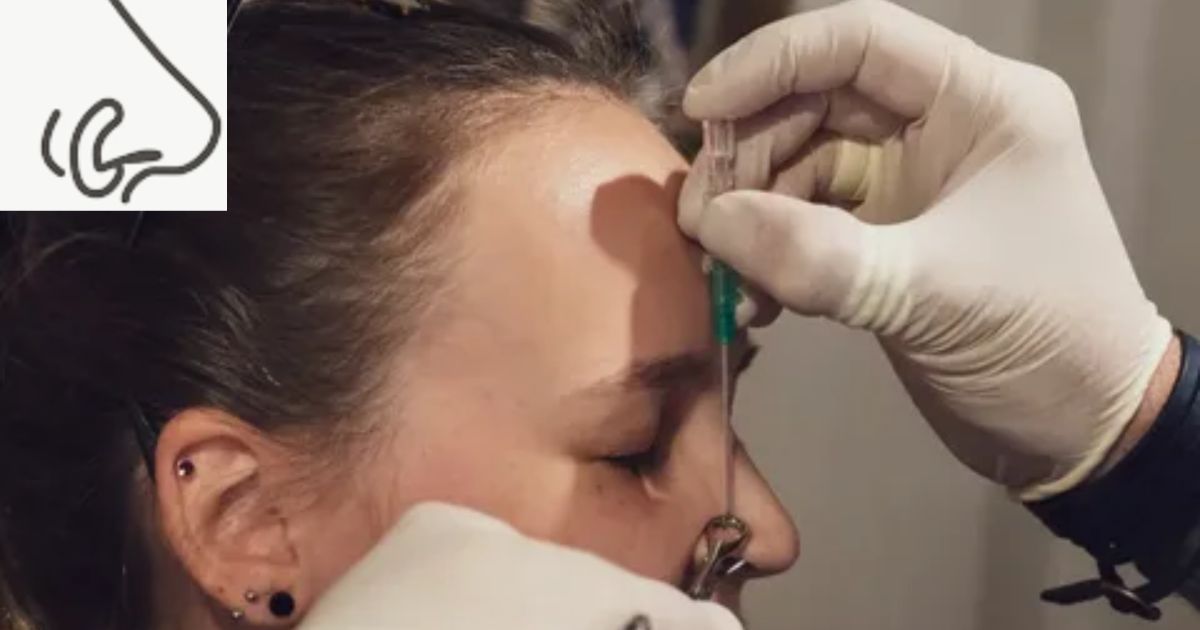Nose piercings have been a popular form of self-expression and adornment for centuries. They can be a powerful statement of individuality and style. However, life circumstances, changing preferences, or even healing issues may lead to the closure of a once-beloved nose piercing. The good news is that reopening a closed nose piercing is entirely possible. This comprehensive guide will walk you through the process, step by step, ensuring you have all the information you need to bring back that sparkle and style.
What Causes Nose Piercings to Close
Before we delve into the process of reopening a closed nose piercing, it’s essential to understand what causes them to close in the first place. Several factors can contribute to this closure:
- Healing Process: When you first get a nose piercing, your body perceives it as a wound. It then begins the natural healing process, trying to close the wound and protect you from potential infections.
- Infection or Irritation: If you experience an infection or irritation around the piercing site, it can lead to swelling and an increased likelihood of the piercing closing as your body’s response to heal.
- Jewelry Removal: Sometimes, a nose piercing might close due to the removal of jewelry. If you leave the piercing without jewelry for an extended period, the hole can start closing.
- Personal Choice: It’s also common for individuals to let their nose piercings close due to personal preference or lifestyle changes. In such cases, reopening the piercing becomes a matter of choice.
Now that you know why nose piercings close let’s explore the steps to reopen them.
Assessing the Situation
Before you embark on the journey to reopen your closed nose piercing, it’s vital to assess the current state of your piercing. This evaluation will help you determine the best approach to take.
Understanding the Healing Process
The healing process plays a significant role in whether your nose piercing remains open or closes. Here’s what you need to know:
- Natural Healing: The body’s natural healing process starts as soon as you remove your nose jewelry. It begins closing the hole to prevent potential infections.
- Timing: The timing of closure can vary from person to person. Some individuals may find their piercing closes within a few hours, while for others, it might take weeks.
- Body Factors: Factors like your body’s natural healing speed and the location of the piercing can affect how quickly the hole closes.
Evaluating the Closure
Next, you should assess how closed your piercing has become. This evaluation can help you decide whether to seek professional assistance or attempt a DIY reopening.
- Partial Closure: If you feel a small bump or dimple around the previous piercing site when you gently press your fingertip, it indicates that the hole hasn’t entirely sealed. This is a good sign if you’re considering reopening it yourself.
- Complete Closure: If there’s no sign of an opening, don’t be discouraged. Even if your nose piercing has fully closed, there are still ways to reopen it successfully.
Reopening Methods
Once you’ve assessed your nose piercing’s condition, you can consider the different methods available for reopening it. Depending on your situation, you can choose to seek professional help or attempt a DIY reopening.
Seeking Professional Help
Reopening a closed nose piercing with the assistance of a professional piercer is often the safest and most efficient option, especially if your piercing has fully closed or if there were previous complications.
- Piercer Expertise: A skilled piercer has the expertise and tools required to make the process as smooth and safe as possible. They can assess the condition of your nose piercing and provide the best advice for reopening.
- Infection Management: If your piercing closed due to an infection or irritation, a professional piercer can ensure that the area is free of any lingering issues before reopening the piercing.
- Minimized Risk: Professional assistance minimizes the risk of complications, as they are experienced in reopening piercings and ensuring proper jewelry placement.
DIY Reopening
If your piercing has only partially closed or if you prefer to try reopening it yourself, follow these steps carefully. Be aware that DIY reopening carries some risk, so proceed with caution.
Materials You’ll Need:
- A sterilized needle or taper
- Saline solution
- Clean, sterilized nose jewelry that matches your previous piercing
Steps to Reopen Your Nose Piercing:
- Gather Your Supplies: Ensure you have all the necessary materials on hand.
- Prepare Your Piercing Site: Clean the area around your nose piercing with warm water and a mild, fragrance-free soap. This reduces the risk of infection during the reopening process.
- Needle Insertion: Carefully insert the sterilized needle or taper into the closed piercing site. Use a steady hand and avoid forcing it through. If it’s too challenging, do not proceed; instead, consult a professional.
- Insert Jewelry: As soon as the needle or taper is through, follow it with the clean, sterilized nose jewelry that matches your previous piercing. Make sure the jewelry is suitable for initial piercings.
- Aftercare: After successfully reopening your nose piercing, the aftercare is crucial. Clean the area daily with saline solution to keep it free from bacteria. Avoid touching the piercing with dirty hands.
Comparison of Reopening Methods: Professional Help vs. DIY
| Reopening Methods | Seeking Professional Help | DIY Reopening |
| Expertise | Skilled piercer with experience and tools | Personal effort, potential risks |
| Infection Management | Professional ensures no lingering issues | DIY requires diligent aftercare |
| Risk | Minimized risk of complications | Some risk involved |
| Materials Needed | None (provided by professional) | Needle, saline solution, jewelry |
| Procedure | Safe and efficient | Careful and cautious |
| Aftercare | Ensured by professional | Requires self-discipline |
| Healing Time | Typically quicker | Varied, depends on care |
| Challenges | Scar tissue, allergies | Potential complications |
| Cost | Professional fees | Lower, DIY supplies |
| Success Rate | High with professional | Varies depending on care |
Aftercare and Healing
After successfully reopening your nose piercing, diligent aftercare is essential to ensure proper healing and minimize complications. Here are some crucial aftercare guidelines:
Cleanliness and Saline Soaks
Proper hygiene is vital to prevent infections and complications.
- Saline Soaks: Perform saline soaks regularly by mixing non-iodized sea salt with warm distilled water. Use a clean cotton ball or pad to apply the solution to the piercing.
- Gentle Cleaning: Clean the area around your reopened piercing daily with a mild, fragrance-free soap and warm water. Avoid harsh or scented soaps that may irritate the skin.
- Pat Dry: After cleaning or performing saline soaks, gently pat the area dry with a clean, lint-free cloth. Avoid using towels that may carry bacteria.
Avoid Over-Touching
While it’s tempting to touch or rotate your newly reopened piercing, doing so with dirty hands can introduce harmful bacteria. Minimize touching the area to reduce the risk of infection and irritation.
Be Mindful of Irritants
Avoid exposing your reopened nose piercing to potential irritants, such as:
- Cosmetics: Be cautious with makeup or skincare products around the piercing area, as they can introduce bacteria or irritate the skin.
- Hair Products: Avoid getting hair products, particularly sprays and gels, on your piercing, as they can lead to complications.
- Sunscreen and Lotions: When applying sunscreen or lotions, take care to avoid contact with the piercing.
Choosing the Right Jewelry

Selecting the right jewelry for your reopened nose piercing is crucial for both comfort and aesthetics.
Material Matters
Opt for jewelry made from hypoallergenic materials to reduce the risk of allergies and irritation. Suitable materials include:
- Surgical Steel: This is a common and safe option for nose piercings.
- Titanium: Titanium is lightweight and hypoallergenic, making it a great choice for sensitive skin.
- Niobium: Another hypoallergenic option, niobium is known for its vibrant colors.
Size and Style
When choosing your nose jewelry, consider both size and style:
- Size: Ensure the jewelry fits your nose comfortably without causing undue pressure or tightness.
- Style: The style of the jewelry is a personal choice. Whether you prefer studs, hoops, or unique designs, make sure it complements your look and doesn’t get caught in clothing or hair.
Potential Challenges
Reopen a closed nose piercing can be a straightforward process for some and more challenging for others. Here are some potential challenges you might encounter:
- Scar Tissue: If your piercing closed due to scarring, it may be more difficult to reopen, and you might need professional assistance.
- Infections: If you experience persistent or severe infections, it’s essential to address these issues before attempting a reopening.
- Pain and Discomfort: Some discomfort is common during the reopening process, but if the pain persists or intensifies, consult a professional.
- Slow Healing: Healing times can vary from person to person. Be patient and attentive to your body’s needs during the healing process.
- Allergic Reactions: If you experience any allergic reactions to the jewelry, remove it immediately and consult a professional for guidance.
FAQs
How do I know if my nose piercing is closed?
If you can’t insert jewelry and there’s no visible hole, it’s likely closed.
Can I use any type of needle for a DIY reopening?
No, use a sterilized needle or piercing taper designed for body piercings.
What’s the typical healing time for a reopened nose piercing?
It varies but may take several weeks to months.
Is it normal to experience some pain during the reopening process?
Yes, mild discomfort can be expected, but consult a professional if it intensifies.
Can I change my nose jewelry right after reopening?
Wait until the piercing fully heals before changing jewelry to prevent complications.
Conclusion
Reopening a closed nose piercing is an exciting journey that allows you to express your individuality and style once again. Whether you choose to seek professional help or embark on a DIY reopening, remember that patience and diligent aftercare are key to ensuring a successful outcome.
Reclaiming the beauty of your nose piercing is achievable with the right knowledge and care. CFollow the steps in this comprehensive guide, and soon you’ll be back to showcasing your unique style with the elegance and personal flair that a nose piercing provides. Embrace the opportunity to revive your nose piercing and enjoy the journey of self-expression.



















